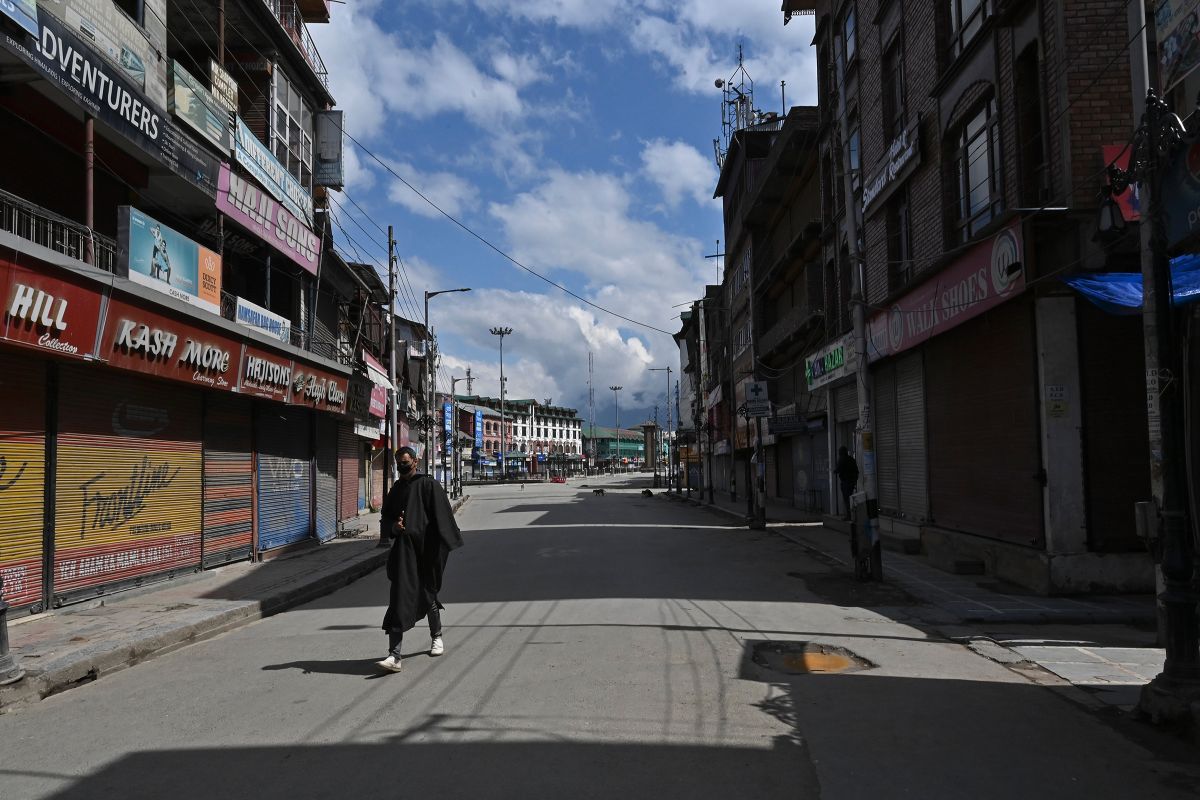Still unexplained
The hunt for the origins of Covid-19 has for the past four years been a tangled web of politics, power struggles, and international finger-pointing.
According to NASA scientists, the reduction in NO2 pollution was first apparent near Wuhan, but eventually spread across the world.

A man wearing a facemask walks along a deserted street during a government-imposed nationwide lockdown as a preventive measure against the COVID-19 coronavirus, in Srinagar on March 29, 2020. (Photo by Tauseef MUSTAFA / AFP)
With a nationwide lockdown in place, over 90 cities, including Delhi, recorded minimal air pollution in the last few days.
India is currently under the biggest lockdown with around 130 crore people asked to stay home in view of the coronavirus outbreak, which has claimed 25 lives and infected over 900 people in the country.
According to the Centre-run System of Air Quality and Weather Forecasting and Research (SAFAR), the impact of the measures taken due to the coronavirus outbreak has resulted in a drop in PM2.5 (fine particulate pollutant) by 30 per cent in Delhi and by 15 per cent in Ahmedabad and Pune.
Advertisement
The level of Nitrogen Oxide (NOx) pollution, which can increase the risk of respiratory conditions, has also reduced. NOx pollution is mainly caused due to a high motor vehicle traffic. In Pune, NOx pollution has reduced by 43 per cent, in Mumbai, by 38 per cent and in Ahmedabad, by 50 per cent.
Gufran Beig, a scientist at SAFAR, said generally in March, pollution is in the “moderate” category (Air Quality Index range: 100-200) while presently, it is in the “satisfactory” (AQI 50-100) or “good” (AQI 0-50) category.
“It is the lockdown impact. Local factors like shutting down of industries and construction and traffic have contributed in improving the air quality. Rain is also helping, but the curbs on local emissions are playing a significant role,” he said.
Under the “good” category, pollution is considered to be at the lowest and the air is believed to be the healthiest to breathe.
According to the data of the Central Pollution Control Board (CPCB), the air quality in the national capital is presently in the “good” category. In Kanpur, which has high pollution levels, it is in the “satisfactory” category. Moreover, 92 other cities with CPCB monitoring centres have recorded minimal air pollution, with the air quality in the range of “good” to “satisfactory”.
As many as 39 cities have recorded “good” air quality and 51 cities have recorded “satisfactory” air quality in the last few days, the CPCB data showed.
An AQI between 0-50 is considered good, 51-100 satisfactory, 101-200 moderate, 201-300 poor, 301-400 very poor and 401-500 severe.
It is not just India but worldwide that the impact of multiple lockdowns can be observed. Quarantining and lockdowns have forced many countries’ industries to shut down, with many factories closing their doors. The World Economic Forum reports, images from the Centre for Research on Energy and Clean Air (CREA), as well as satellite footage from NASA and the European Space Agency (ESA), show a drastic decline in NO₂ emissions over recent months, particularly across Italy and China.
According to NASA scientists, the reduction in NO2 pollution was first apparent near Wuhan, but eventually spread across the world. Millions of people have been quarantined in one of the largest such actions in human history. “This is the first time I have seen such a dramatic drop-off over such a wide area for a specific event,” said Fei Liu, an air quality researcher at NASA’s Goddard Space Flight Center. Liu recalls seeing a drop in NO2 over several countries during the economic recession that began in 2008, but the decrease was gradual.
Advertisement